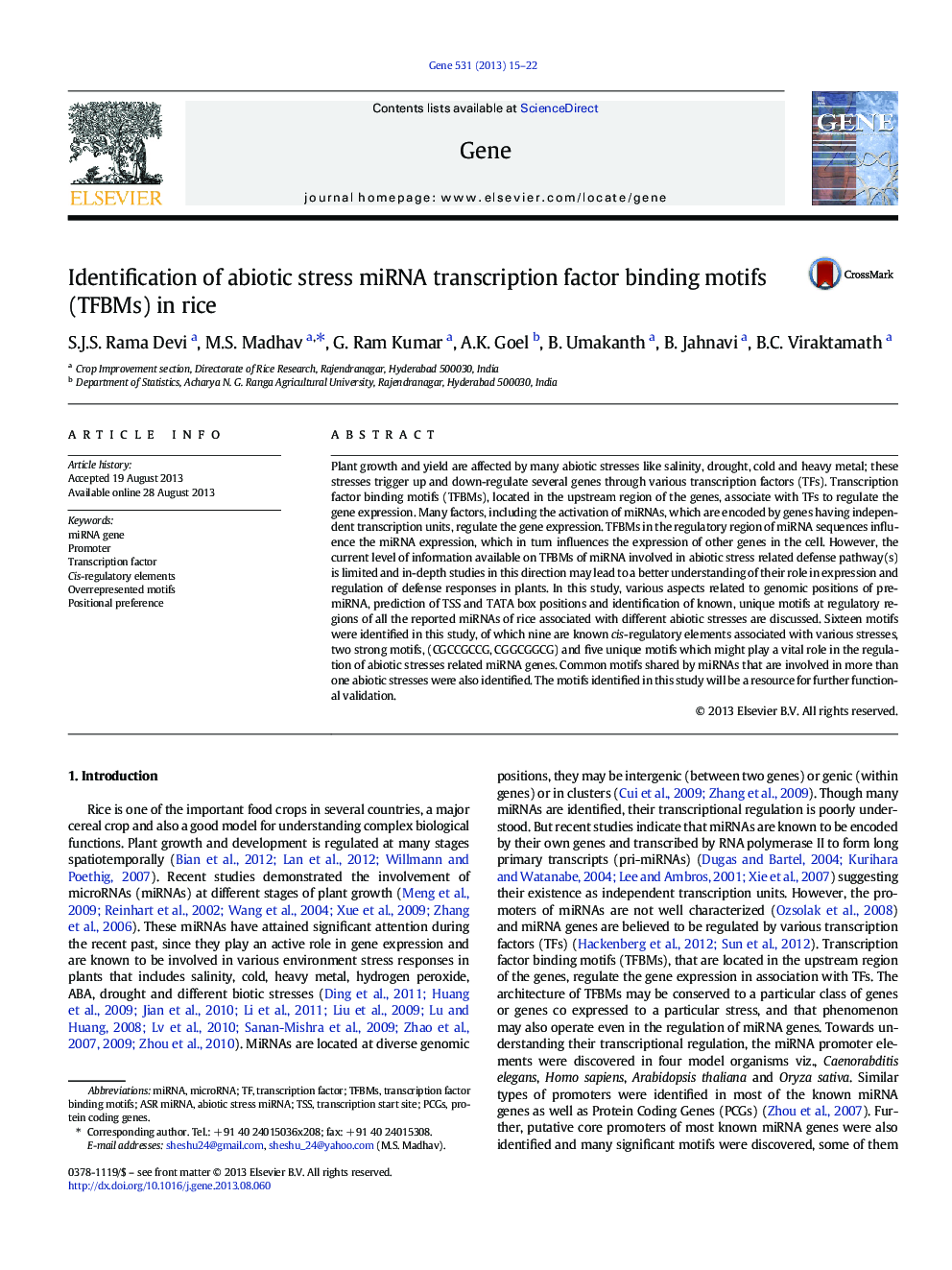| کد مقاله | کد نشریه | سال انتشار | مقاله انگلیسی | نسخه تمام متن |
|---|---|---|---|---|
| 2816915 | 1159957 | 2013 | 8 صفحه PDF | دانلود رایگان |

• Demonstrated a systematic method for prediction and validation of TFBMs of miRNAs.
• Determined the presence 16 TFBMs for different ASR miRNAs in rice.
• The 1.5 kb upstream region of miRNA may play vital role in their regulation.
• The identified strong TFBMs are good candidates for experimental validation.
Plant growth and yield are affected by many abiotic stresses like salinity, drought, cold and heavy metal; these stresses trigger up and down-regulate several genes through various transcription factors (TFs). Transcription factor binding motifs (TFBMs), located in the upstream region of the genes, associate with TFs to regulate the gene expression. Many factors, including the activation of miRNAs, which are encoded by genes having independent transcription units, regulate the gene expression. TFBMs in the regulatory region of miRNA sequences influence the miRNA expression, which in turn influences the expression of other genes in the cell. However, the current level of information available on TFBMs of miRNA involved in abiotic stress related defense pathway(s) is limited and in-depth studies in this direction may lead to a better understanding of their role in expression and regulation of defense responses in plants. In this study, various aspects related to genomic positions of pre-miRNA, prediction of TSS and TATA box positions and identification of known, unique motifs at regulatory regions of all the reported miRNAs of rice associated with different abiotic stresses are discussed. Sixteen motifs were identified in this study, of which nine are known cis-regulatory elements associated with various stresses, two strong motifs, (CGCCGCCG, CGGCGGCG) and five unique motifs which might play a vital role in the regulation of abiotic stresses related miRNA genes. Common motifs shared by miRNAs that are involved in more than one abiotic stresses were also identified. The motifs identified in this study will be a resource for further functional validation.
Journal: Gene - Volume 531, Issue 1, 15 November 2013, Pages 15–22